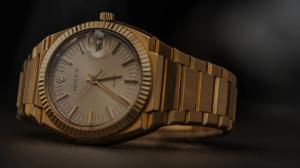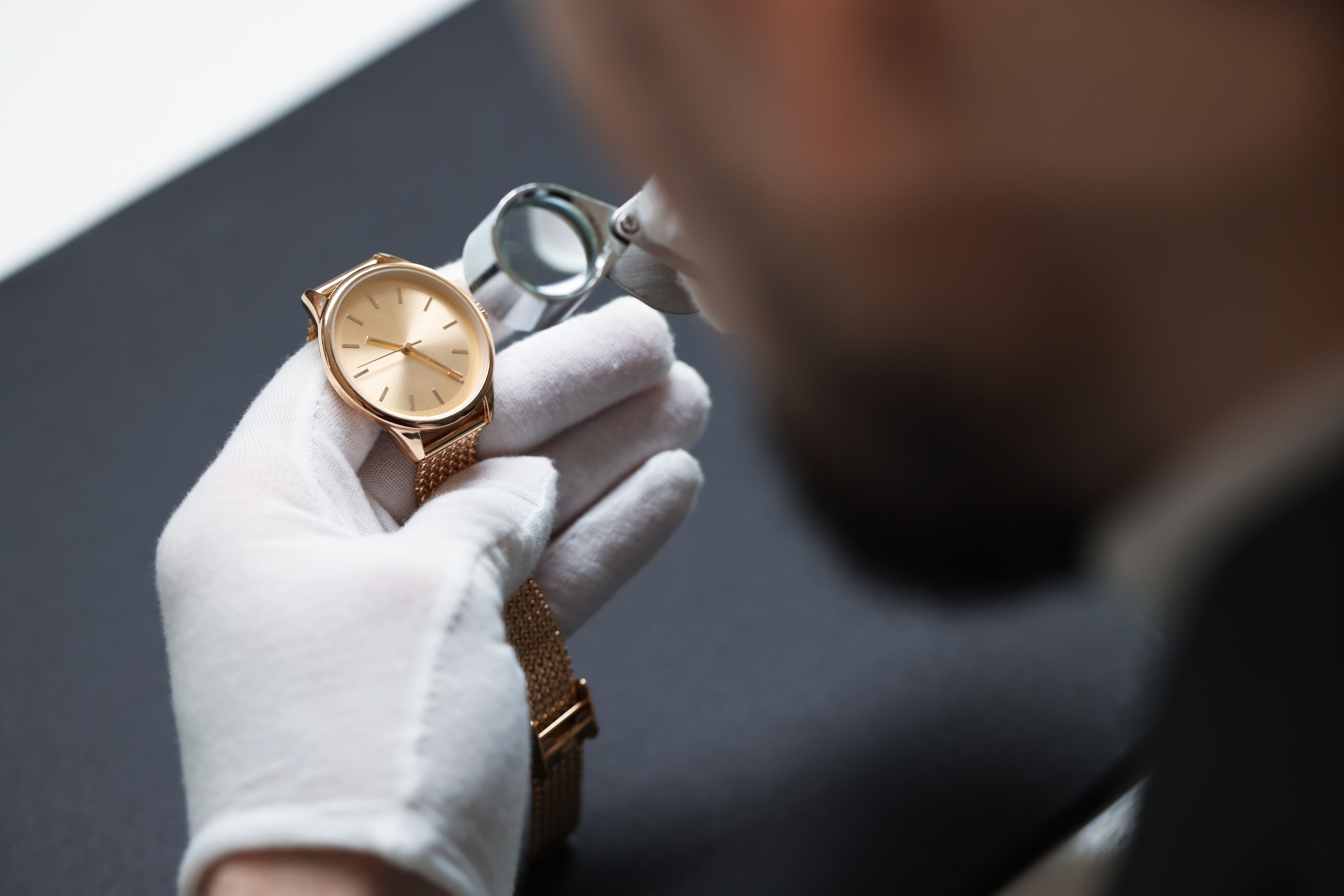From Passion to Investment: How Collectible Watches Are Outperforming Traditional Assets

A gold Rolex—once a pawnshop symbol of quick liquidity, now recognized as a portfolio-worthy asset that embodies prestige, craftsmanship, and long-term financial value.
Avi-Meir Zaslavsky, founder of 999Watches, explores how timepieces have evolved from personal passions to powerful investment instruments.
Avi-Meir Zaslavsky, founder of 999Watches, believes this shift reflects a broader cultural and economic trend. “Collectible watches combine rarity, artistry, and function in a way that few other assets do,” he explains. “For collectors and investors alike, the right watch can provide not just aesthetic pleasure but also significant financial returns.”
Luxury watches have steadily gained recognition as an alternative investment category. Prestigious auction houses report record-breaking sales for rare models, while secondary markets continue to thrive. Global demand is fueled by growing interest from emerging markets, the influence of social media, and the appeal of tangible assets in uncertain economic times.
“In today’s volatile financial climate, investors are drawn to hard assets that retain and grow in value,” says Zaslavsky. “Watches fit this profile perfectly—they’re portable, durable, and, in many cases, scarce.”
According to recent market analyses, certain models from Rolex, Patek Philippe, Audemars Piguet, and other leading houses have outperformed stock indices over the last decade. This performance has attracted not only enthusiasts but also investors seeking diversification.
Several factors influence whether a timepiece evolves from a simple accessory into a highly prized collectible:
1. Rarity and Limited Production: Scarcity fuels demand. Limited-edition releases or discontinued models often see rapid appreciation.
2. Brand Prestige: Renowned watchmakers with a heritage of craftsmanship inspire confidence among investors.
3. Condition and Provenance: Mint-condition pieces with verifiable ownership histories command premium prices.
4. Cultural Relevance: Watches associated with celebrities, films, or historic events often experience surges in demand.
5. Craftsmanship and Innovation: Technical excellence, such as unique complications, enhances long-term desirability.
“Collectors must look beyond the dial,” Zaslavsky advises. “Understanding the story, the maker, and the mechanics of a watch is crucial. These details often determine whether a timepiece appreciates or stagnates.”
For many collectors, the journey begins with passion. A fascination with horology, a love for fine design, or the pursuit of a personal milestone purchase often leads to a growing collection. Over time, however, collectors discover the financial advantages of their passion.
“Passion is the gateway, but knowledge turns passion into investment,” notes Zaslavsky. “The smartest investors are those who study the market, follow trends, and make acquisitions with both heart and mind.”
Unlike purely financial assets, watches offer intrinsic enjoyment. Owners can wear and appreciate their investments daily—a feature that sets watches apart from many traditional instruments. This dual benefit enhances their appeal, blending lifestyle with strategy.
The last decade has seen remarkable growth in the luxury watch sector. Certain Rolex Daytona models, for example, have appreciated more than 250%. Similarly, Patek Philippe’s Nautilus and Aquanaut lines have achieved extraordinary returns, often doubling or tripling in value within a few years.
Zaslavsky remarks, “What makes watches unique as an asset is their resilience. Even during economic downturns, demand for rare and iconic timepieces remains strong. They’re not immune to fluctuations, but they recover faster than many other markets.”
Additionally, the rise of online platforms has democratized access to collectible watches. Investors now have global visibility of prices and trends, enabling smarter, data-driven decisions. Transparency and liquidity in the watch market are increasing, further solidifying its reputation as an investment avenue.
Zaslavsky outlines several key strategies for those looking to capitalize on watches as an investment:
1. Educate Yourself: Learn about brands, models, and movements. Read industry reports, attend watch fairs, and engage with collector communities.
2. Focus on Iconic Pieces: Watches with a strong historical track record—like the Rolex Submariner or Omega Speedmaster—are safer long-term bets.
3. Consider Limited Editions: Scarcity drives demand, but verify authenticity and market interest before investing.
4. Prioritize Condition: Watches in mint or original condition retain value better than heavily restored or modified pieces.
5. Diversify: Balance investments across brands and price ranges to mitigate risk.
6. Think Long-Term: While some watches appreciate quickly, most require patience to achieve significant returns.
“Successful watch investing requires discipline,” stresses Zaslavsky. “It’s about making informed choices, not chasing fads. True value is built over time.”
As with any investment, collectible watches are not without risk. Prices can fluctuate, trends can shift, and counterfeit markets pose challenges. Authentication and verification are crucial steps.
“There’s always a risk of buying into hype,” warns Zaslavsky. “Not every watch will appreciate, and some may even decline. That’s why expertise, research, and professional guidance are essential.”
Liquidity is another factor. While the secondary market is active, selling a high-value watch may take time, especially if seeking top dollar. Investors should approach watches as medium- to long-term assets, not quick-flip opportunities.
When compared to traditional investments, watches offer unique advantages and limitations. Stocks and bonds may yield predictable returns but lack the tangible enjoyment of collectibles. Real estate offers stability but often requires large capital and ongoing management.
“Watches combine portability, beauty, and investment potential in a way that traditional assets cannot,” Zaslavsky observes. “They can be part of a balanced portfolio, offering both diversification and enjoyment.”
While watches should not replace core financial instruments, they can complement them, adding an alternative asset class that performs well under certain conditions.
The digital revolution has transformed the watch investment landscape. Online auctions, blockchain-based authentication, and digital trading platforms have increased transparency and reduced barriers to entry.
“Technology has made watch collecting more accessible and trustworthy,” says Zaslavsky. “Investors now have tools to verify authenticity, track values, and buy or sell globally. This evolution strengthens confidence in the market.”
Mobile apps offering watch valuations, collector forums, and online databases empower investors with real-time information. As a result, the market is more liquid and dynamic than ever before.
Industry experts predict continued growth in the collectible watch sector, with rising interest from younger investors. Millennials and Gen Z, drawn to both the cultural cachet and investment potential of watches, are becoming significant players.
“Watches resonate with younger generations because they embody both tradition and individuality,” explains Zaslavsky. “They’re not just investments—they’re statements of identity and taste.”
Sustainability is also influencing the market. Vintage and pre-owned watches align with eco-conscious values, further boosting demand. This trend enhances the longevity and desirability of collectible timepieces.
From passion-driven acquisitions to strategic investments, collectible watches have firmly established themselves as a legitimate and profitable asset class. Their ability to blend art, history, and functionality with financial growth sets them apart in the modern investment landscape.
Zaslavsky concludes, “The beauty of watches lies in their dual nature. They tell time, they tell stories, and they can tell a tale of financial success. For those willing to learn and approach the market strategically, watches are more than accessories—they’re investments with the power to outperform traditional assets.”
Avi-Meir Zaslavsky
999Watches
info@999Watches.com
Visit us on social media:
LinkedIn
Instagram
Facebook
X
Legal Disclaimer:
EIN Presswire provides this news content "as is" without warranty of any kind. We do not accept any responsibility or liability for the accuracy, content, images, videos, licenses, completeness, legality, or reliability of the information contained in this article. If you have any complaints or copyright issues related to this article, kindly contact the author above.


